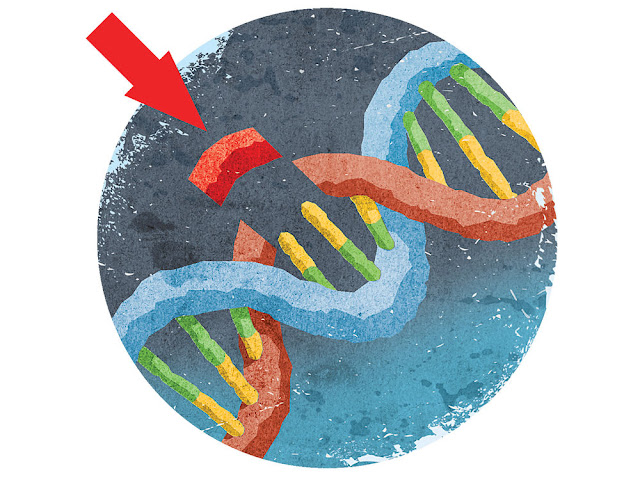 |
| National Institute of Allergy and Infectious Diseases (NIAID) |
The list, which was released Monday, enumerates 12 bacterial threats, grouping them into three categories: critical, high, and medium.
"Antibiotic resistance is growing and we are running out of treatment options. If we leave it to market forces alone, the new antibiotics we most urgently need are not going to be developed in time," said Dr. Marie-Paule Kieny, the WHO's assistant director-general for health systems and innovation.
"The pipeline is practically dry."
Three bacteria were listed as critical:
- Acinetobacter baumannii bacteria that are resistant to important antibiotics called carbapenems. These are highly drug resistant bacteria that can cause a range of infections for hospitalized patients, including pneumonia, wound, or blood infections.
 |
| U.S. Centers for Disease Control and Prevention |
- Pseudomonas aeruginosa, which are resistant to carbapenems. These bacteria can cause skin rashes and ear infectious in healthy people but also severe blood infections and pneumonia when contracted by sick people in the hospital.
- Enterobacteriaceae that are resistant to both carbepenems and another class of antibiotics, cephalosporins. This family of bacteria live in the human gut and includes bugs such as E. coli and Salmonella.
Notably missing from the list is the bacterium that causes tuberculosis. That was not included, Kieny said, because the need for new antibiotics to treat it has already been designated the highest priority.
Although mounting concerns about the worsening problem of antibiotic resistance have reinvigorated research efforts, producing new antibiotics is an expensive and challenging task.
The international team of experts who drew up the new list urged researchers and pharmaceutical companies to focus their efforts on a type of bacteria known as Gram negatives. (The terminology relates to how the bacteria respond to a stain — developed by Hans Christian Gram — used to make them easier to see under a microscope.)
Dr. Nicola Magrini, a scientist with the WHO's department of innovation, access and use of essential medicines, said pharmaceutical companies have recently spent more efforts trying to find antibiotics for Gram positive bacteria, perhaps because they are easier and less costly to develop.
 |
| Microscopic image of gram-negative Pseudomonas aeruginosa bacteria (pink-red rods) Credit: wikipedia |
Gram negative bacteria typically live in the human gut, which means when they cause illness it can be serious bloodstream infections or urinary tract infections. Gram positive bacteria are generally found outside the body, on the skin or in the nostrils.
Kieny said the 12 bacteria featured on the priority list were chosen based on the level of drug resistance that already exists for each, the numbers of deaths they cause, the frequency with which people become infected with them outside of hospitals, and the burden these infections place on health care systems.
Paradoxically, though, she and colleagues from the WHO could not provide an estimate of the annual number of deaths attributable to antibiotic-resistant infections. The international disease code system does not currently include a code for antibiotic-resistant infections; it is being amended to include one.
The critical pathogens are ones that cause severe infections and high mortality in hospital patients, Kieny said. While they are not as common as other drug-resistant infections, they are costly in terms of health care resources needed to treat infected patients and in lives lost.
Six others were listed as high priority for new antibiotics. That grouping represents bacteria that cause a large number of infections in otherwise healthy people. Included there is the bacteria that causes gonorrhea, for which there are almost no remaining effective treatments.
Three other bacteria were listed as being of medium priority, because they are becoming increasingly resistant to available drugs. This group includes Streptococcus pneumoniae that is not susceptible to penicillin. This bacterium causes pneumonia, ear and sinus infections, as well as meningitis and blood infections.
The creation of the list was applauded by others working to combat the rise of antibiotic resistance.
"This priority pathogens list, developed with input from across our community, is important to steer research in the race against drug resistant infection — one of the greatest threats to modern health," said Tim Jinks, head of drug-resistant infections for the British medical charity Wellcome Trust.
"Within a generation, without new antibiotics, deaths from drug-resistant infection could reach 10 million a year. Without new medicines to treat deadly infection, lifesaving treatments like chemotherapy and organ transplant, and routine operations like caesareans and hip replacements, will be potentially fatal."
The full list is:
Priority 1: Critical
1. Acinetobacter baumannii, carbapenem-resistant
2. Pseudomonas aeruginosa, carbapenem-resistant
3. Enterobacteriaceae, carbapenem-resistant, ESBL-producing
Priority 2: High
4. Enterococcus faecium, vancomycin-resistant
5. Staphylococcus aureus, methicillin-resistant, vancomycin-intermediate and resistant
6. Helicobacter pylori, clarithromycin-resistant
7. Campylobacter spp., fluoroquinolone-resistant
8. Salmonellae, fluoroquinolone-resistant
9. Neisseria gonorrhoeae, cephalosporin-resistant, fluoroquinolone-resistant
Priority 3: Medium
10. Streptococcus pneumoniae, penicillin-non-susceptible
11. Haemophilus influenzae, ampicillin-resistant
12. Shigella spp., fluoroquinolone-resistant
Other articles on the same theme:
Story source:
The above post is reprinted from materials provided by Businessinsider . Note: Materials may be edited for content and length.


